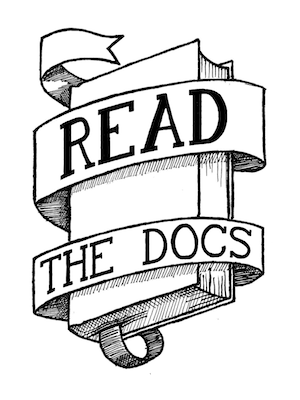Screencast 2: Logging in Django, for fun and profit¶
This is the second screencast of a week long series.
So that I don’t spam all of the Django Community Feed (Bad RSS handling has done that more than once, Sorry!) I’m only going to be posting this post and the last post summarizing all of the screencasts on the aggregator. So if you’re trying to keep up with all of the screencasts that will be coming out this week, either stay tuned to the site or subscribe to my feed.
Screencast 2: Logging in Django¶
Setup¶
This screencast is going to be about how to use the python logging module in Django. It’s in the Python standard library, so there is nothing extra to install to use the simple python logging module. The screencast also makes use of the excellent Django-Logging, which should be downloaded and installed beforehand.
svn checkout http://django-logging.googlecode.com/svn/trunk/ django-logging
This allows for you to follow along on the second part of the screencast. I also do a little bit of work inside my django-testmaker app, so you can go grab that if you want to follow along as well. If not no big deal, the screencast is more about general logging anyway.
Video and Download¶
The video is available to download in higher res or for streaming.
Download (21MB H.264 .mov)
Screencast 2: Using Logging in Django from Eric Holscher on Vimeo.
Writeup¶
Part 1: python logging module¶
We start out with some really simple logging methods. The first is
a simple print statement inside of your views. This outputs the
command to the terminal in your development server. The next way to
do it is with a simple logging command:
import logging
logging.error('your error goes here!')
During the screencast I say that logging.error goes to Standard Out, when in actuality it goes to Standard Error. In this case they’re the same thing…Then I go through how logging is done within the testmaker app. This is the basic setup for python’s logging module that I used:
logging.basicConfig(level=logging.INFO,
format='%(message)s',
filename= "/file/to/log/to",
filemode='w'
)
More documentation about this and the python logging module is available here It includes a lot of really good information about the logging module, like lots of message formatting options. I show how you can tail a log file from testmaker and talk about the neat advanced features of the logging module like logging across a network. As you can see the logging module is very powerful!
Part 2: django-logging¶
In the second part of the screencast we show how to use the Django Logging middleware. This is what is going to go into your settings_debug.py:
from settings import *
DEBUG = True
INTERNAL_IPS = ['YOUR.IP.HERE']
MIDDLEWARE_CLASSES += ('djangologging.middleware.LoggingMiddleware',)
LOGGING_LOG_SQL = True
This then has all of your logging output appended to the bottom of the page you’re currently on. This gives you a similiar capability of using the error page to debug, except you don’t have to have an error. You can debug while the pages are still working.
The next and last really neat feature is showing the SQL queries that are being executed to render a page. This is incredibly useful for fine-tuning your django sites. With the ORM, there are tiny little tweaks that you can sometimes make to decrease (or increase!) the numbers of queries you execute pretty dramatically. Having this enabled during development is a good way to catch those mistakes, and really understand what is going on under the hood of your Django apps.
Remember, when you wrap all of your logging stuff in the logging module, you can do some really neat things after the fact. I was able to use all of the django-logging stuff while still logging output to a file and whatever else happened to be going on with the logger at the time. This in incredibly powerful, and allows you to almost have django-style ‘pluggable logging backends’ that do different things.
Again in this one I end a little silly: Thanks for your time and have a good day (since I’l hopefully see you again tomorrow :))


